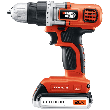Understanding Lumber Sizes
Written by Lee Wyatt (last updated March 10, 2021)
Understanding lumber sizes is a good way to really break into the do it yourself scene. After all, learning the different sizes of lumber will let you know what you are dealing with as you wander through the lumber yards and home improvement stores purchasing your materials. All you need to do is keep in mind this information as you are doing your shopping.
- Nominal vs. dressed. There are typically two terms commonly used when talking about lumber sizes. Those terms are nominal and dressed. Nominal refers to wood that has been rough cut, and hasn't been planed or surfaced. Wood that has been planed and surfaces is referred to as dressed. Typically nominal sized wood is slightly larger than the actual, dressed, measurements.
- Board vs. dimension. Another couple of terms that are commonly used in lumber sizes are "board" and "dimension". These terms are usually in reference to how thick the lumber is. For example, a nominal piece of wood that has a thickness of one inch or less will usually be listed as board lumber. Nominal wood that is more than is two inches by whatever, and four inches by whatever are referred to as dimension lumber.
- Measurements. When you look at lumber when in the store, you will usually see the size listed in one of two ways. The first way is something along the lines of 1x6, 2x2, or even 4x4. These measurements refer to the thickness of the wood by the width of the wood. The second method of listing lumber sizes is usually only referred to when you are talking about wood that has been cut to a specific length. For example the dimensions of 1x6x8 refers to a piece of wood that is one inch thick, by six inches wide, and eight inches long. The same type of measurements also apply to dressed wood as well.
Now that you know the basics of what makes up the lumber sizes, you can begin understanding what is offered at the various stores. Keep in mind that the information listed here is for the most commonly used measurements and sizes at lumber yards and home improvement stores. If you still have any questions you can easily ask the clerks on staff at the stores for a bit more information and they will be more than happy to help you out.
Author Bio
Lee Wyatt
Contributor of numerous Tips.Net articles, Lee Wyatt is quickly becoming a regular "Jack of all trades." He is currently an independent contractor specializing in writing and editing. Contact him today for all of your writing and editing needs! Click here to contact. Learn more about Lee...
Essential Tools for the Home Plumber
If you are thinking of doing any type of plumbing work yourself, you need to make sure that you have the right tools for ...
Discover More
Recycling Old Carpet
If there is one drawback to replacing old carpet flooring, it is trying to figure out what you are going to do with that ...
Discover More
Creating an Adventure Garden
If you are looking for a themed garden that everyone can enjoy, you really can't go wrong with an adventure garden. These ...
Discover More
More Home Improvement Tips
Working with Pressure Treated Lumber
Pressure treated lumber is a material that is exceedingly popular among those in the construction and do-it-yourself ...
Discover More
Types of Wood Joints
If you are thinking of doing any type of wood work around the home, then knowing the types of wood joints is an absolute ...
Discover More
Choosing Quality Lumber for Home Projects
Choosing quality lumber for home projects is something that every do-it-yourself enthusiast should learn to do. After ...
Discover More

Comments